
Transit Briefs: BART, DART, LACMTA, NYMTA, SEPTA
Written by Marybeth Luczak, Executive Editor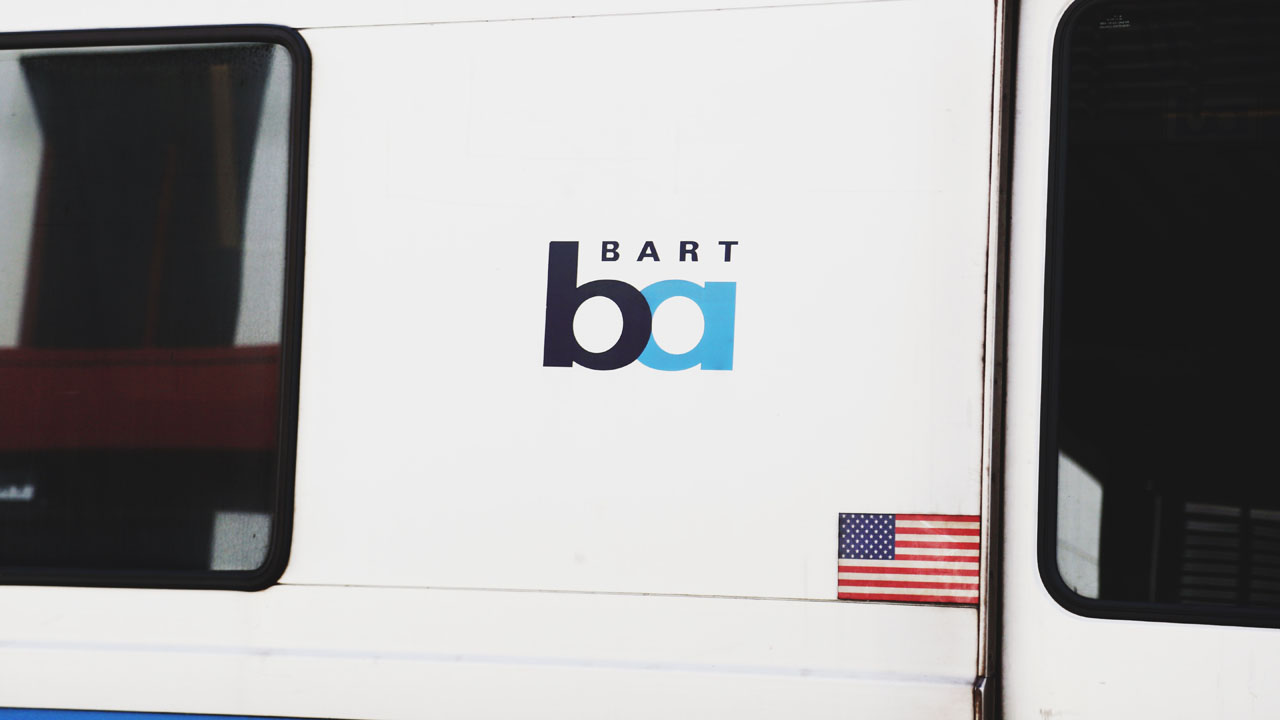
No BART rider will wait more than 20 minutes for a scheduled train no matter what hour of the day or day of the week starting Sept. 11.
Bay Area Rapid Transit (BART) will roll out a new service schedule this fall that reflects post-pandemic commute patterns. Also, Dallas Area Rapid Transit (DART) upgrades its rail and bus seating; Los Angeles County Metropolitan Transportation Authority (LACMTA) extends its free-fare pilot for K-14 students; New York Metropolitan Transportation Authority (MTA) receives a bailout package under a tentative New York State budget agreement, suspends Twitter use for service updates, and celebrates an internship program partnership; and Southeastern Pennsylvania Rapid Transit Authority (SEPTA) awards a design contract for ADA improvements on the Board Street Line.
Starting Sept. 11, BART’s new service schedule will respond to post-pandemic commute patterns and ridership growth opportunities, the transit agency reported April 27.
The schedule ends all 30-minute frequencies on nights and weekends, and increases service every day on the Yellow Line (Antioch-SF), which has the highest ridership but is only served by one line, according to BART.
No rider will wait more than 20 minutes for a scheduled train no matter what hour of the day or day of the week. Now, there are wait times of 30 minutes on nights and weekends (except for daytime 15-minute service on Saturdays on the Yellow Line).
According to BART, the Yellow Line will have trains arriving about every 10 minutes before 9 p.m., Monday through Friday, instead of every 15 minutes.
“To make this significant investment in service on nights and weekends, some weekday service will be slightly scaled back based on ridership trends and areas of the system where riders are served by multiple lines with the option to transfer,” BART said. For instance, the Blue Line to and from Dublin will have 20-minute frequencies at all hours, marking an increase on nights and weekends, but an added five minutes between trains during weekday daytime hours. BART’s Blue (Dublin-Daly City) and Orange (Richmond-Berryessa) lines serve the fewest riders in the system on weekdays.
Under the new schedule, riders coming from the Richmond and Berryessa/North San Jose direction will have a train about every 10 minutes on weekdays during daytime hours instead of a train every 7.5 minutes. BART said it will increase communication on these lines about the option to take an Orange Line (Richmond-Berryessa) train and transfer if necessary to complete their trip.
According to BART, the new schedule also improves service to and from the San Francisco International (SFO) and Oakland International (OAK) airports. During the daytime, nine trains per hour will serve SFO instead of eight, and on nights and weekends, trains will arrive and depart every 20 minutes instead of every 30 minutes. Additionally, all Red Line trains will now stop at SFO before heading to Millbrae; currently the Red Line passes through Millbrae before heading to the airport. There will also be more trains on nights and weekends to OAK.
BART reported that its new service plan will improve on-time performance and reliability during the peak commute “because there will be less train traffic and congestion through the core of our system.” It explained that trains “won’t stack up as frequently as they will be better spaced apart, allowing us to recover from delays faster.”
BART said it will still maintain a clock-face schedule seven days per week, but starting Sept. 11 it will be with 20-minute common headways.
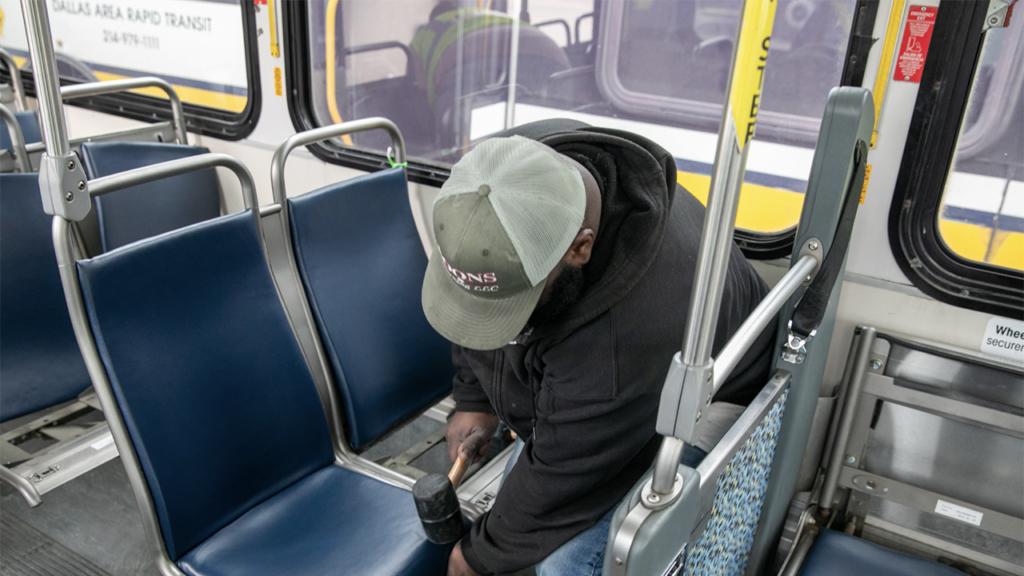
As part of its commitment to providing “a safe and clean” transit experience, DART reported on April 27 that it is updating light rail vehicle and bus fleet seats. Installation of 15,000 new vinyl seats for the agency’s 163 LRVs will begin in May and wrap up in September. DART will also replace nearly 34,000 fabric seat cushions and backs on its bus fleet with vinyl-covered models.
DART last November launched the DART Clean Team Initiative utilizing on-board contract cleaning personnel to remove trash and debris aboard DART LRVs as they operate throughout the network, supplementing the cleaning protocols already in place.
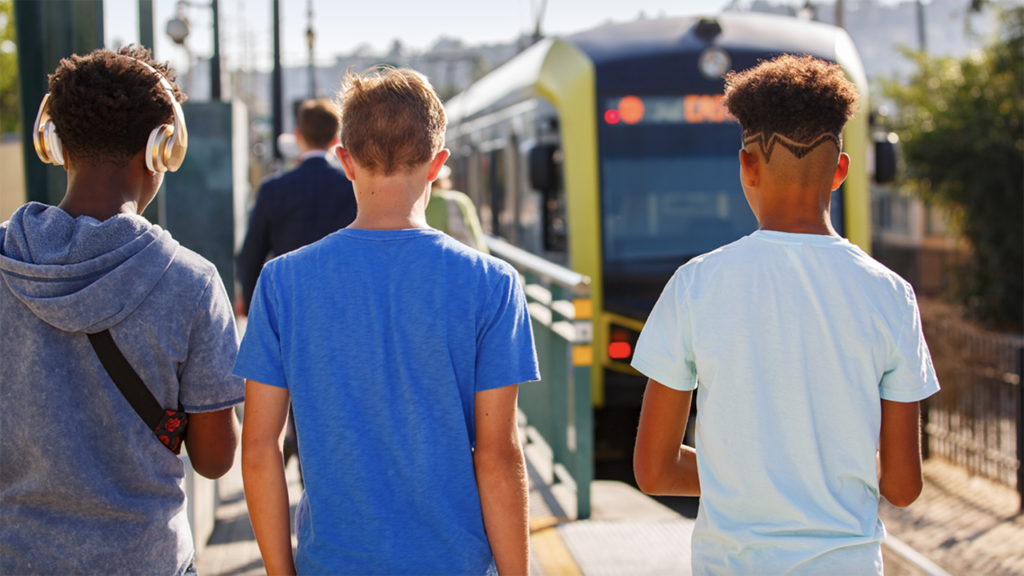
The LACMTA Board of Directors on April 27 authorized spending $20 million to extend the GoPass fareless pilot program for Los Angeles County K-12 and community college students. The program was originally set to expire on June 30, 2023; it will now continue for another year.
Currently, the GoPass program provides a free transit pass to more than 241,000 students, representing nearly 20% of the more than 2 million in the county. Participating students have generated more than 16.6 million boardings on the LACMTA system since the program began in October 2021, averaging more than 1.2 million boardings per month. According to the transit authority, the program “sought to alleviate some of the financial pressure for L.A. County residents still recovering from the COVID-19 pandemic and utilized one-time federal funding through the 2021 American Rescue Plan Act (ARPA).” Funding the program also relies on cost-sharing agreements with participating schools and school districts.
LACMTA said that the Board’s extension, paid for with Fiscal Year 2024 operating funds, will allow it to retain the program’s benefits while continuing to identify and pursue local, state, federal and other funding sources.
“We extended the GoPass pilot program because it provides a better quality of life and future job growth opportunities for the most disadvantaged students in our county,” LACMTA Board Chair and Glendale City Councilmember Ara J. Najarian said. “Students can use these passes not just for school, but to any other destination they want or need to travel to in our county. It’s a truly unlimited pass program that has already demonstrated its ability to improve our students’ lives and save them hundreds of dollars in transportation costs every year.”
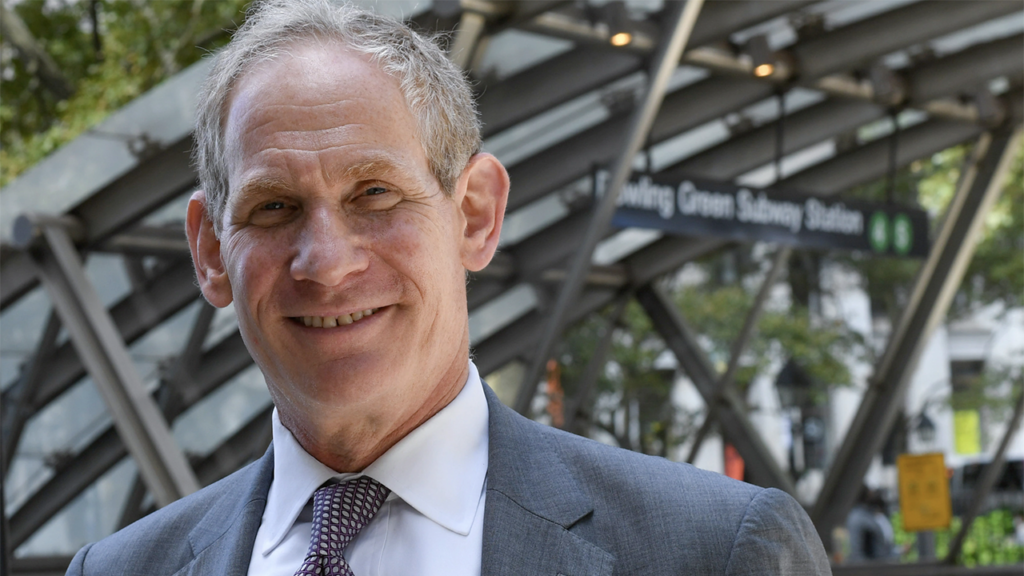
New York Gov. Kathy Hochul on April 27 announced a tentative agreement with lawmakers on the Fiscal Year 2024 New York state budget. It includes saving MTA from the “fiscal cliff and securing long-term stability” through adjusting the Payroll Mobility Tax for the largest businesses within New York City to 0.6%, which will generate approximately $1.1 billion for MTA; $300 million in one-time state aid; requiring New York City to contribute $165 million for paratransit services funding; and $65 million in state aid to reduce MTA’s proposed fare hike from 5.5% to 4%. Additionally, lawmakers secured funding for a pilot program providing five free bus routes in New York City.
With a conceptual agreement in place, the legislative houses are expected to pass bills that will enact the state budget priorities, including MTA funding, according to the Governor’s Office. The total New York state budget for FY 2024 is estimated at $229 billion.
“We are incredibly grateful to the legislature, along with the Governor, for this effort to assure the MTA’s long-term financial stability, and we look forward to working with them as we deliver essential mass transit service for New Yorkers,” MTA Chair and CEO Janno Lieber said.
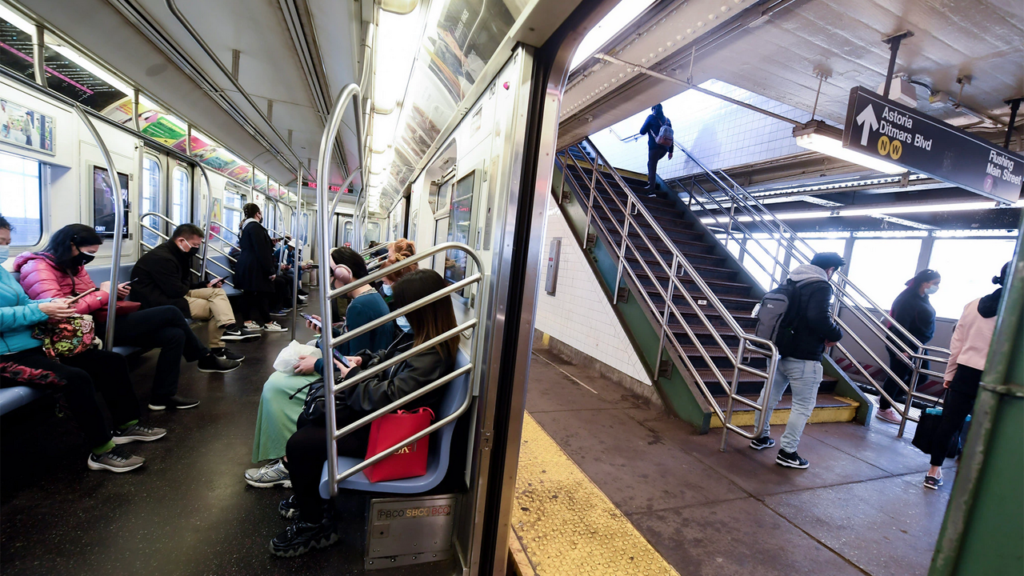
Also on April 27, the MTA reported that it terminated posting service information to Twitter, effectively immediately, “as the reliability of the platform can no longer be guaranteed.”
MTA on April 14 was unable to post via Twitter real-time updates for subway, commuter rail and bus service “due to what it described as ‘an API issue,” The New York Post reported on April 17. The issue was resolved early on April 15. MTA tweeted that its “access to the Twitter API has been unsuspended,” according to the newspaper, which explained that the issue was with an application programming interface (API), “a tool allowing multiple computer applications to talk with each other—in this case, in the form of updates on the status of key public transportation systems [including MTA and BART, which experienced a similar issue April 14-15].” The MTA’s access to Twitter through its API was interrupted again April 27.
According to The Post, Elon Musk “announced in February that Twitter planned to begin charging accounts for access to its API system. The MTA told Bloomberg it was informed that paid service would take effect by the end of March—though the agency claims it was not given a specific date for when it could lose access.”
MTA acting Chief Customer Officer Shanifah Rieara said on April 27 that the transit authority “does not pay tech platforms to publish service information and has built redundant tools that provide service alerts in real time. Those include the MYmta and TrainTime apps, the MTA’s homepage at MTA.info, email alerts and text messages. Service alerts are also available on thousands of screens in stations, on trains and in buses.”
According to MTA, riders will continue to be able to tweet at all MTA accounts, including @nyct_subway, with questions and requests for help as they have before, and those requests will continue to receive responses. Additionally, the @MTA account will remain active for branding and other messaging.
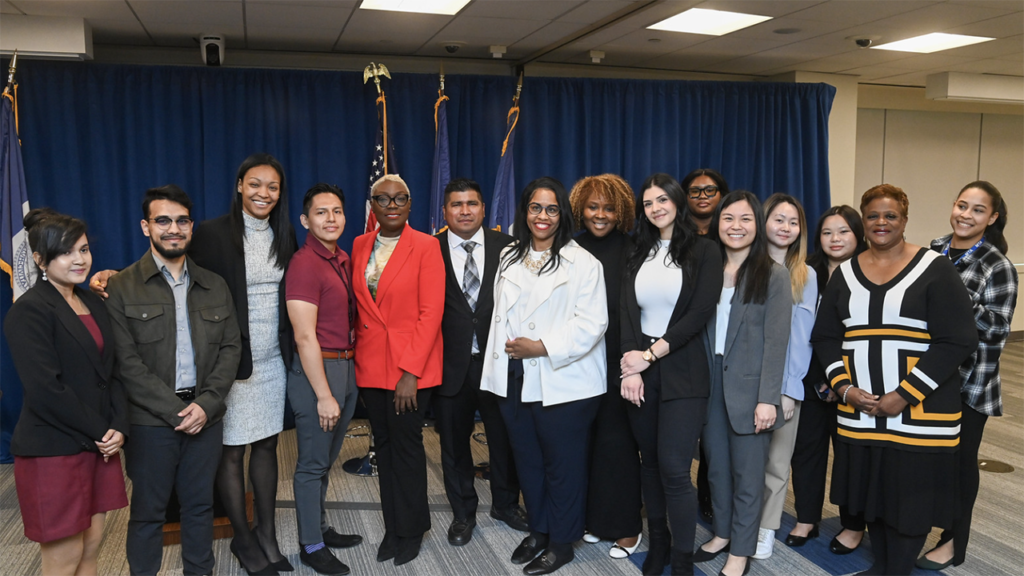
MTA and City University of New York (CUNY) on April 27 celebrated an internship program partnership that links CUNY students from across all 25 campuses with paid internship opportunities at MTA at both the undergraduate and graduate levels. There are currently 84 interns wrapping up internships with MTA, marking the program’s first full year.
When it launched last summer, the program received 16,216 applications for just 150 slots. Earlier this month, 128 full-time positions were listed for the summer program, which runs for approximately eight weeks.
Internships are available across all MTA agencies: New York City Transit Subways, Buses, Long Island Rail Road, Metro-North Railroad, Construction & Development, and Bridges and Tunnels, with openings in fields such as legal, finance, architecture, technology, project management, environmental science, engineering, real estate, station operations, safety, transportation and communications. According to MTA, students working full time are eligible to receive benefits, including medical, through Research Foundation CUNY.
“It’s important for us as an employer and leaders in the transportation industry to provide opportunities and support the development of the next generation of talent from all backgrounds,” MTA Chief Administrative Officer Lisette Camilo said. “One of the MTA’s core values is equity and that doesn’t just apply to the transit service we provide. This partnership is a great way to connect everyday New Yorkers with the transit system that keeps their city moving while shaping them for their future and that of the MTA’s.”
“CUNY is pleased to partner with the MTA in this internship program, which gives our students the opportunity to explore pathways across the MTA’s broad network,” CUNY Chancellor Félix V. Matos Rodríguez said. “These paid, impactful internships allow students to learn meaningful skills and gain real-world experience that the job market requires.”
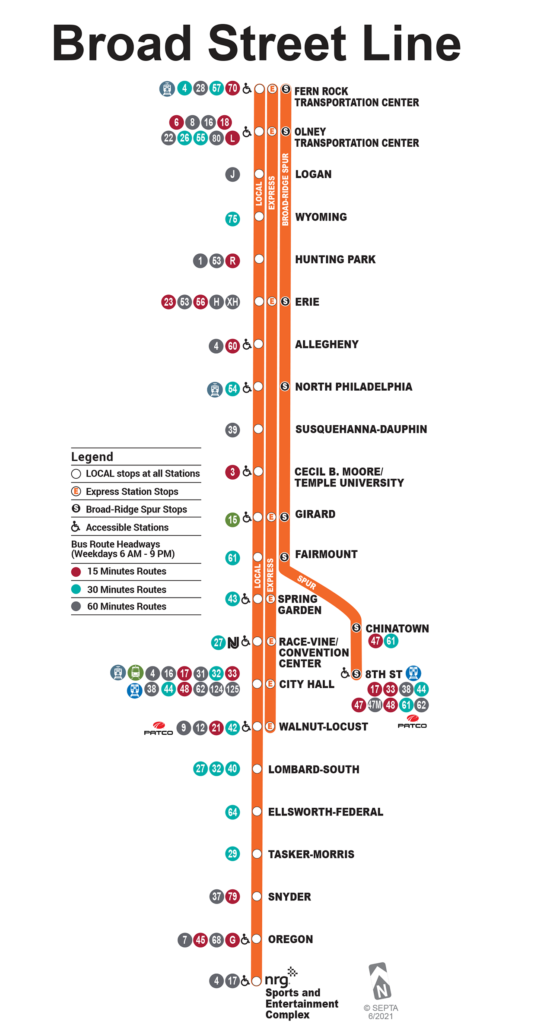
Under a more than $6.5 million contract, Michael Baker International Inc. will perform architectural, design and construction-related services to support SEPTA’s ADA improvement project on the Broad Street Line. The transit authority reported the award on April 27, and said the Logan, Wyoming, and Hunting Park stations will be made fully ADA accessible. Improvements include elevator installation; platform renovation; new signage, lighting and security cameras; and waterproofing. The three stations are currently only accessible via stairs. Once the design is completed, SEPTA can advance on the construction phase.
SEPTA has prioritized accessibility on the Broad Street Line in its 12-Year Capital Program. It noted that an ADA improvement project is nearly finished at Susquehanna-Dauphin Station, and construction is under way at Tasker-Morris Station.
“Station accessibility is a core component of SEPTA Forward, the Authority’s Strategic Plan,” SEPTA General Manager and CEO Leslie S. Richards said. “We have made significant progress in upgrading our infrastructure, and we will continue to prioritize enhancements across the system to make SEPTA easier to use and more equitable.”



